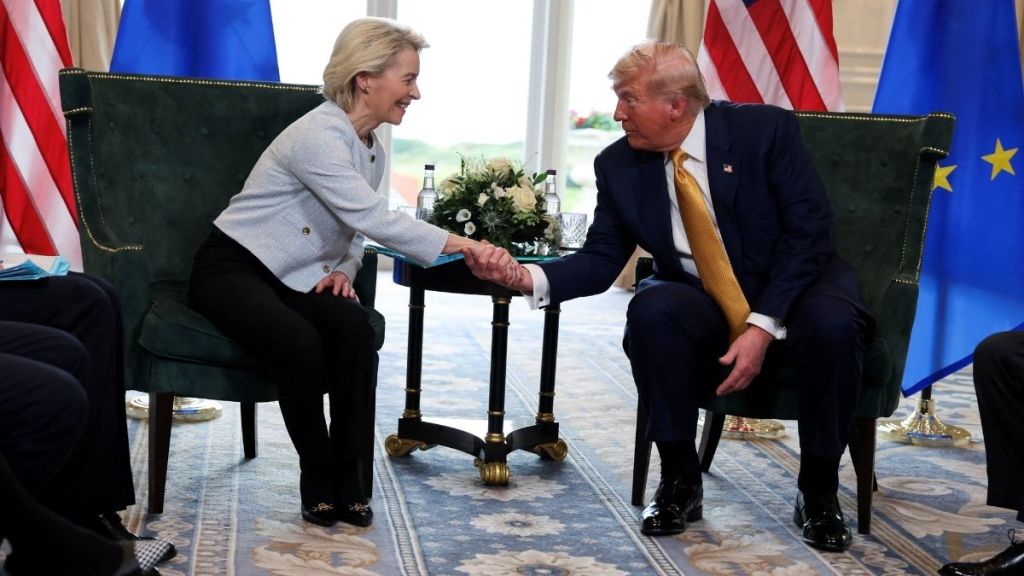The United States and the European Union have finally shared the inside details of their much negotiated trade deal that was reached last month. On Thursday, the US and EU agreed a joint statement on the framework trade deal, ending months of uncertainty for industries and consumers since Donald Trump took charge as the US president.
The two sides have shared sectors wise deal, which includes the EU removing tariffs completely on all US industrial goods, a baseline US tariff on EU goods, reported Reuters. Other key sectors that are part of the deal are: cars, pharma, metals and wines, among others.
The EU has also agreed to purchase $750 billion in US energy and for EU companies to invest $600 billion in the US.
US industrial goods, EU cars get relief
As part of the deal, the EU has agreed to remove tariffs on all US industrial goods. The report said the EU will provide preferential market access for a wide range of US seafood and agricultural goods, including tree nuts, dairy products, fresh and processed fruits and vegetables, processed foods, planting seeds, soybean oil, and pork and bison meat.
Apart from this, the EU has also agreed for a baseline tariff of 15% on its goods entering the US. This 15% is not added to any existing rate and has been designed to work as the maximum rate, except where the pre-existing rates are higher.
The cars that will enter the US market from the EU will now attract a 15% tariff, down from the previous rate of 27.5%, the joint statement said, Reuters added. However, this will apply only from the first day of the month in which the European Union introduces a legislative proposal to remove its tariffs on US industrial goods, the report added.
The two sides have also agreed to accept and provide mutual recognition of each other’s standards for cars.
What about pharmaceuticals, semiconductors and metals
The EU’s pharmaceuticals and microchips and lumber will be subjected to 15% tariffs, the report said. Now, this will be the case only after the US concludes Section 232 investigations and sets new global tariff rates for the two sectors. As of now, this duty has been agreed to at a maximum rate of 15%.
No specific tariff has been mentioned for metals, except for a line that states that both sides “intend to consider the possibility to cooperate on ring-fencing their respective domestic markets from overcapacity, while ensuring secure supply chains between each other, including through tariff-rate quota solutions.”
The report mentioned that previously, the EU and US officials said tariffs on European steel, aluminium would remain at 50%, with the same tariff applying on copper from August 1.
In many other sectors like wines, the statement says they “agree to consider other sectors and products that are important for their economies and value chains for inclusion in the list of products for which only the MFN tariffs would apply.”
Besides these, the European Union has committed to procure US liquefied natural gas, oil, and nuclear energy products with an expected offtake valued at $750 billion through 2028, the statement read.

